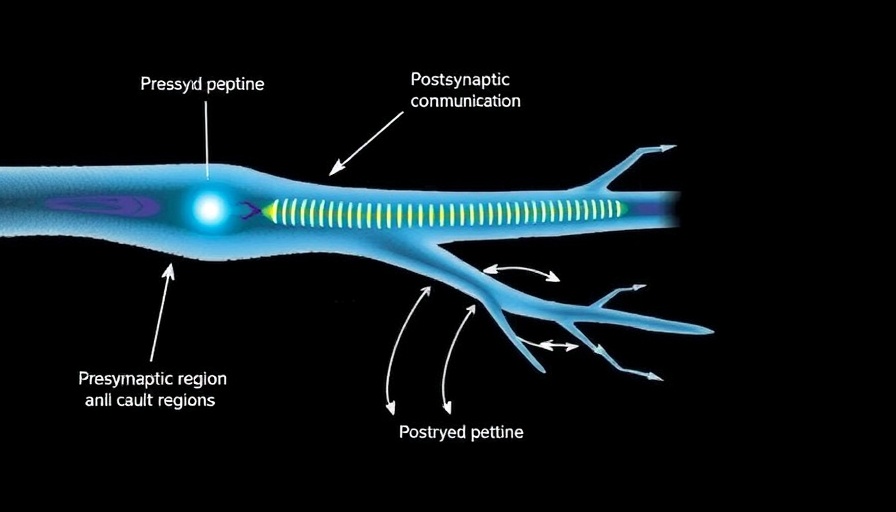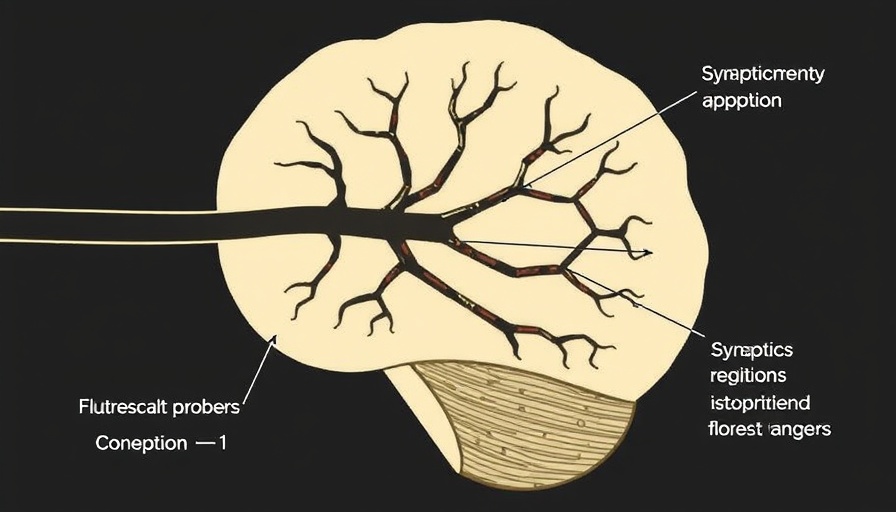
Revolutionizing Neuroscience: The Power of Simple Fluorescent Probes
Recent advancements in neuroscience are making it easier than ever for researchers and healthcare professionals to visualize brain activity. A groundbreaking study illustrates how simply 'sprinkling' a fluorescent probe can deliver immediate insights into active brain synapses. This innovative method allows for real-time monitoring, providing a clearer understanding of neurological functions and disorders.
What Makes this Method Unique?
Unlike traditional techniques that often require complicated processes and equipment, this approach utilizes a straightforward application of fluorescent probes directly onto brain tissue. When introduced, the probes bind to specific synapses, illuminating activity with bright fluorescence. This real-time visual representation allows practitioners to monitor brain responses during various tasks, which could be crucial for diagnosing conditions such as Alzheimer’s disease, epilepsy, or other cognitive impairments.
Historical Context and Background of Brain Visualization
The journey to effectively visualize neurological activity has evolved dramatically over the years. Initially, methods like biopsies and imaging technologies such as MRI were staples in examining brain functions. However, these techniques presented limitations regarding invasiveness, cost, and accessibility. The introduction of optical imaging has paved the way for more responsive technology, like fluorescent probes, by allowing scientists and clinicians to observe dynamic synaptic processes without the need for invasive surgery or extensive preparation.
How Does it Work? The Science Behind Fluorescent Probes
Fluorescent probes are specialized molecules that emit light when activated by specific wavelengths. When introduced into the brain, these probes target proteins associated with synaptic activity. Once activated, they create a vivid fluorescence that correlates with the intensity of synaptic communication. This methodological simplicity carries significant implications for rapid assessments in clinical settings, opening a new avenue for immediate feedback on neurological function.
Real-World Applications and Benefits
Healthcare practitioners, particularly those focusing on neurology and cognitive health, can benefit greatly from this advancement. The ease of use and real-time feedback mechanism allows for better patient engagement, as practitioners can demonstrate the state of synaptic health directly to patients, potentially alleviating fears and enhancing understanding of neurological disorders. Additionally, this technology’s rapid assessment capability could lead to more personalized treatment plans, adapting quickly based on observed synaptic activity.
Potential Challenges and Considerations
While the prospects of fluorescent probes are exciting, several considerations must be addressed. First, practitioners must ensure they are trained to interpret the data accurately. Furthermore, the long-term effects of introducing fluorescent materials into brain tissue are still not fully understood, necessitating careful evaluation in clinical environments. Ethical considerations regarding the use of such technology also arise, particularly in assessing its long-term impact on cognitive health.
Future Predictions and Trends in Neurological Monitoring
The future of brain monitoring appears bright, with fluorescent probes representing just the beginning of a technological revolution in neuroscience. As we learn more about the complexities of brain connections, rapid advancements in materials science may yield even more refined probes with enhanced specificity and fewer side effects. This method signifies a shift toward immediate, dynamic monitoring of brain functions, which could revolutionize how clinicians approach treatment and diagnosis of neurological disorders.
Actionable Insights for Practitioners
For healthcare practitioners looking to integrate this technology into their practices, consider the following steps: stay informed about the latest research in fluorescent probe technology, participate in training and workshops offered by research institutions, and evaluate the feasibility of integrating these tools into your diagnostic processes. Engaging with communities of practice focused on neurological advancements can also foster shared learning and collaborative opportunities.
As advancements unfold, it’s crucial for healthcare professionals to embrace and explore these innovations. Keeping abreast of medical news and technological breakthroughs will empower you to deliver the best care possible for your patients. Fluorescent probes could be a crucial part of that future ability.
 Add Row
Add Row  Add
Add 






Write A Comment